
Friedrichsburg Fortress (later fort, now restored gate with museum exhibits) is a fortress that existed in Konigsberg (now Kaliningrad) and was part of the defensive fortifications of the city.
The Friedrichsburg Fortress was built as a citadel as part of the First fortifications of Konigsberg. The fortress project was developed by the Prussian engineer and mathematician Christian Otter, who invented the Dutch system of building fortresses, the peculiarity of which was to surround the structure with a wide water moat. It was the Friedrichsburg Citadel that was an example of the Dutch system, in the image of which the Novodvinsk Fortress was built near Arkhangelsk.
The construction of the Friedrichsburg fortress began in 1657 as an earthen structure with a vaulted brick casemate built into the body of the shaft. On a quadrangular territory surrounded by earthen ramparts, the fortress at various times had: the commandant's office, barracks and barns, guardhouses for soldiers and officers, a prison, as well as a church, a brewery and a bakery.
There was enough space in the interior to accommodate a permanent garrison of 150 people and the necessary supplies of food, weapons and household supplies. When the enemy attacked Konigsberg, the fortress independently acted as a pillar of defense - a citadel.
The four bastions of the citadel were given euphonious names: Emerald, Pearl, Ruby and Diamond. The first three stones symbolized three medieval cities: Kneiphof, Lebenicht and Altstadt, respectively, since the colors of the stones coincided with the main colors of the coats of arms of the cities from which Konigsberg later grew. The diamond corresponded to the Konigsberg Castle as a symbol of monarchical power.
Coats of arms of cities

The "growth" of the fortress began with the north-eastern bastion. In addition to it, a cavalier was erected - an external structure that served to defend the gate. Then three more cavaliers appeared on the western, eastern and southern sides.
After the completion of the construction, the Friedrichsburg Fortress acquired the shape of a heptagonal star in the topographic plan.
By the end of the 18th century, the outer ramparts in front of the water moat of the Friedrichsburg fortress had slid, the cavaliers were covered with sand. These fortifications were no longer restored, and at the beginning of the 19th century, the plan of the Friedrichsburg fortress acquired the outlines of a four-pointed star.
Plan of the Friedrichsburg fortress 1769
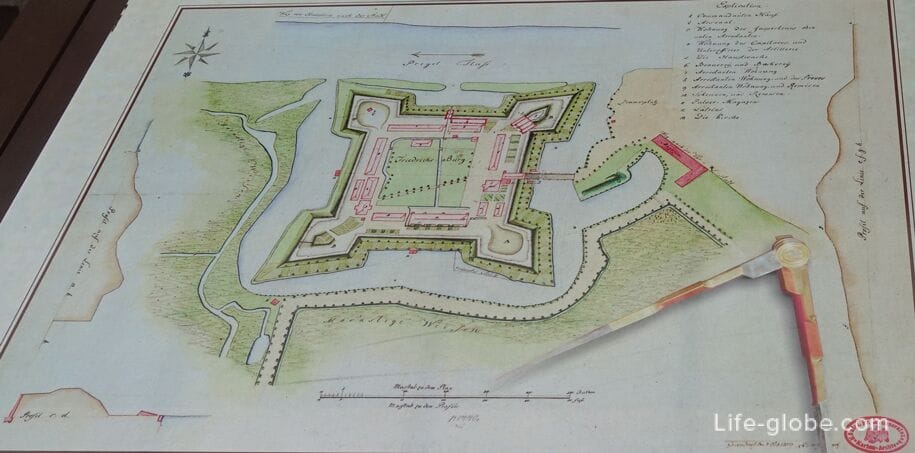
In 1852-1858, the Friedrichsburg fortress was reconstructed into a fort of the same name (Fort Friedrichsburg / Fort Friedrichsburg or Feste Friedrichsburg), which became part of the Second Val Fortifications of Konigsberg. During the reconstruction, a brick gate was erected in Fort Friedrichsburg. The author of the gate project was August Stuhler, the court architect of the Prussian King Frederick William IV.
In 1910, Fort Friedrichsburg, along with other defensive structures of the Second Roller Bypass, was declared obsolete, and the fort was sold to the German Imperial Railway, and 6 years later it was dismantled: the shafts were dug, the ditches were filled in, and the main part of the structures was dismantled.
After the liquidation of the fort in 1916, auxiliary railway tracks were laid on its territory. By the decision of the Mayor of Konigsberg, the entrance gate of the fortress was preserved as an architectural monument, after which they also became known as the Friedrichsburg Gate.
By 1939, a two-story building was added to the north side of the Friedrichsburg Gate, and they themselves were used as the office of the freight station of the Imperial Railway.
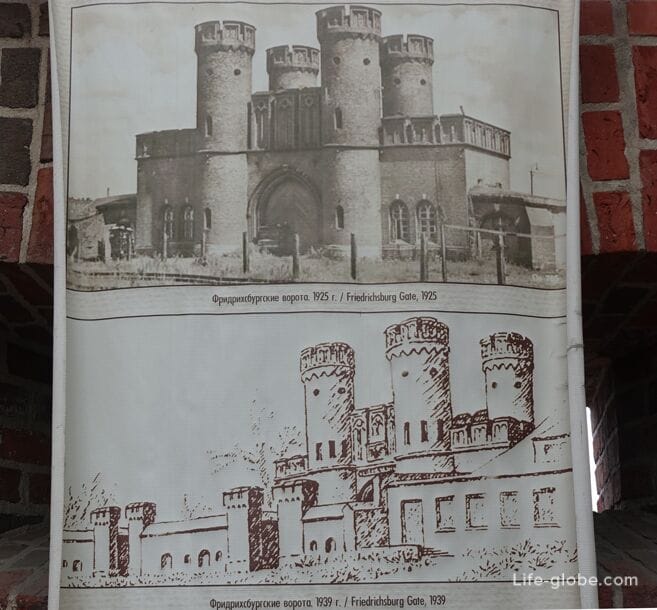
Image of the Friedrichsburg Gate in Konigsberg
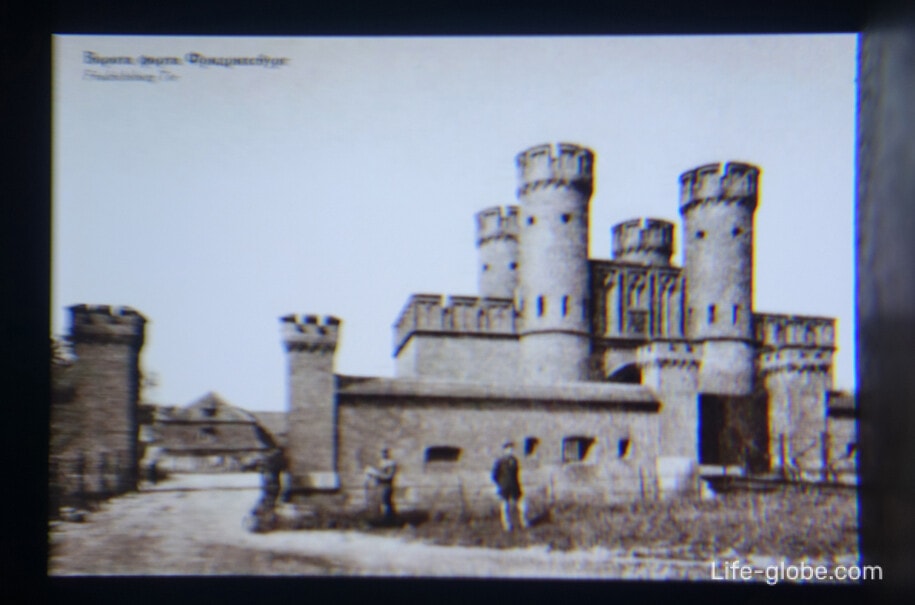
During the storming of Konigsberg in April 1945, the gates of the Friedrichsburg Citadel received numerous damages.
After the war, the adjacent territory was transferred to a motor transport company, and the gates themselves were soon adapted for an auto repair shop.
In 1960, the Friedrichsburg Gate was taken under state protection as an architectural monument.
In 1990, the cultural and historical center "Prussia" of the Kaliningrad regional branch of the Russian Cultural Foundation began work on clearing and preserving the monument. For a long time, the gates were occupied by various private structures.
In 2002, the monument received the status of a cultural heritage site of federal significance.
In March 2007, the emergency Friedrichsburg Gate was transferred to the Museum of the World Ocean.
On May 27, 2011, the historical and cultural center "Ship Resurrection" was opened in the renovated premises of the Friedrichsburg Gate and on the adjacent territory, which functions at the gate to this day.
What was and what became by 2011

Friedrichsburg Gate currently
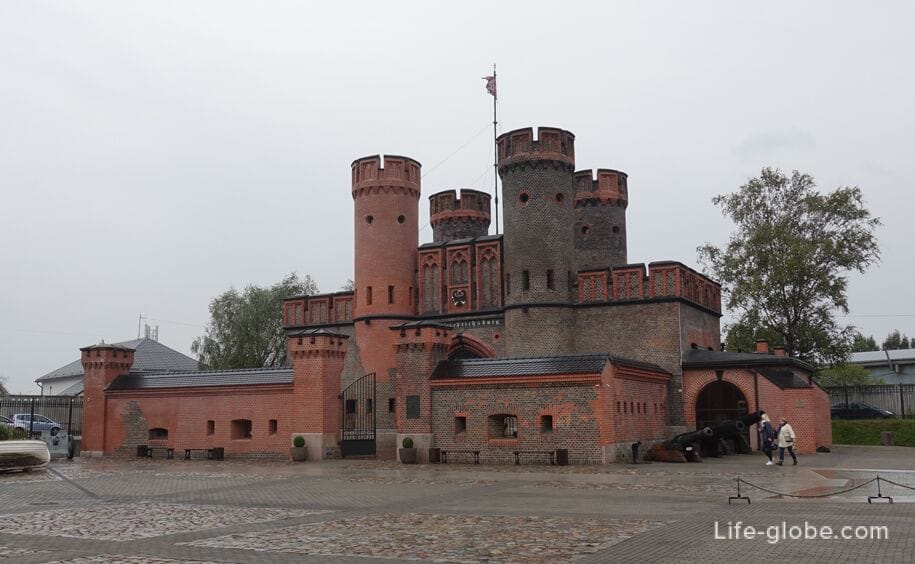
The historical and cultural center "Ship Resurrection" in the Friedrichsburg Gate is dedicated to the history of shipbuilding and the revival of historical ships, includes two museum complexes: the Friedrichsburg Gate and the Lodeyny Yard, located on the adjacent territory. More about the museum at the Friedrichsburg Gate...
The Friedrichsburg Gate and the territory are also one of the venues for mass celebrations, historical reconstructions for residents of Kaliningrad and guests of the city.
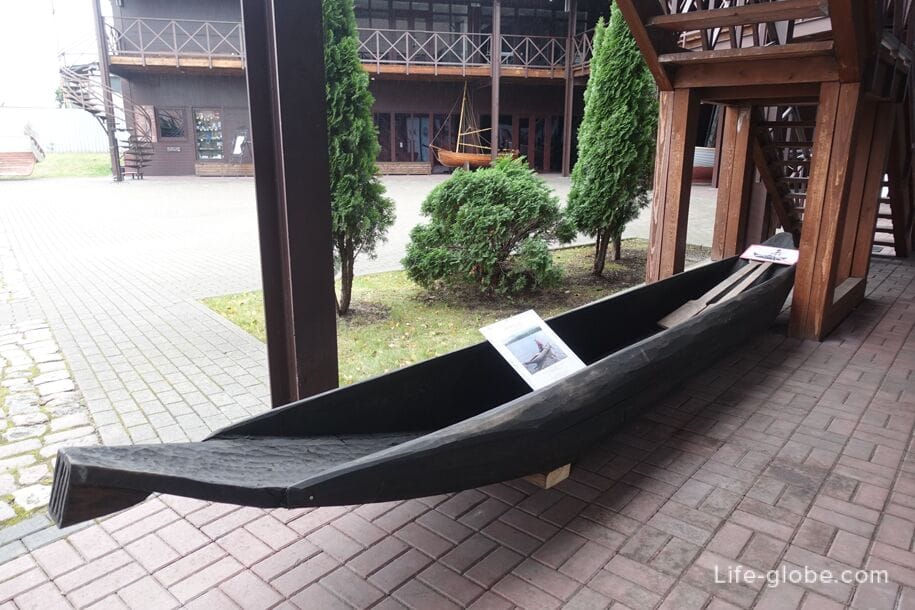
The address of the gates of the Friedrichsburg Fortress in Kaliningrad: 39 Portovaya Street, Kaliningrad, on the south side of the Pregolya River, near the Two-tier Bridge and the Peter the Great Embankment.